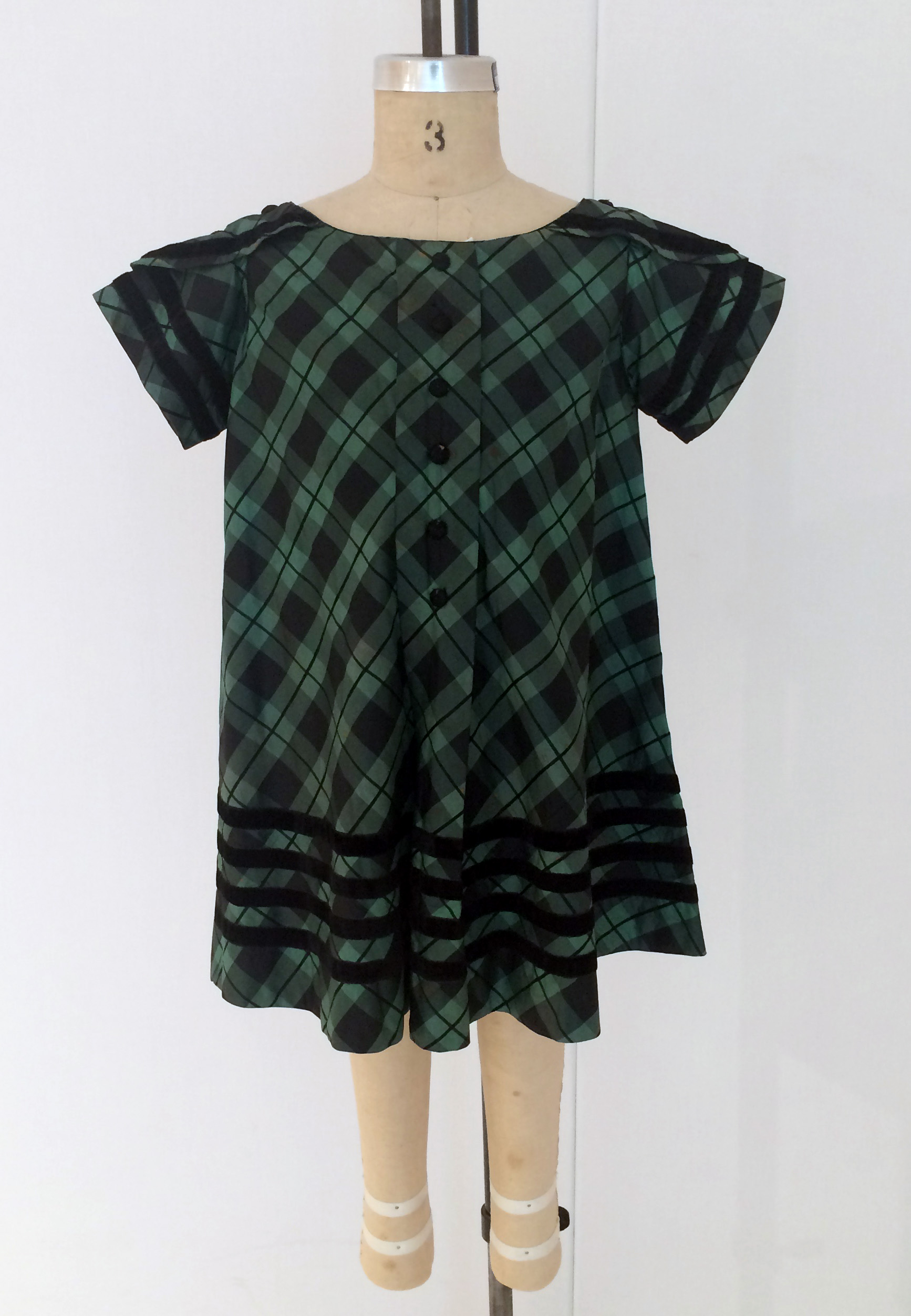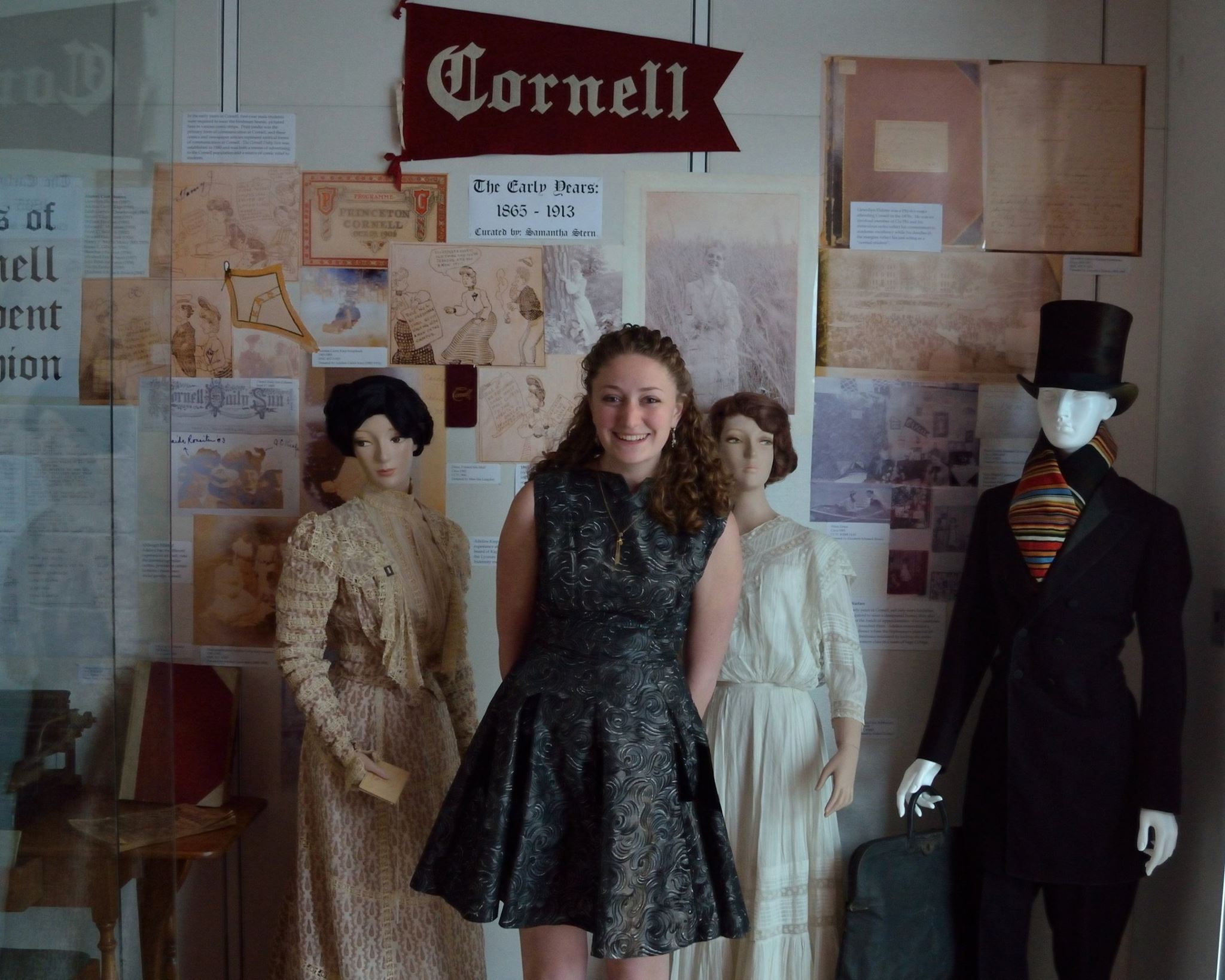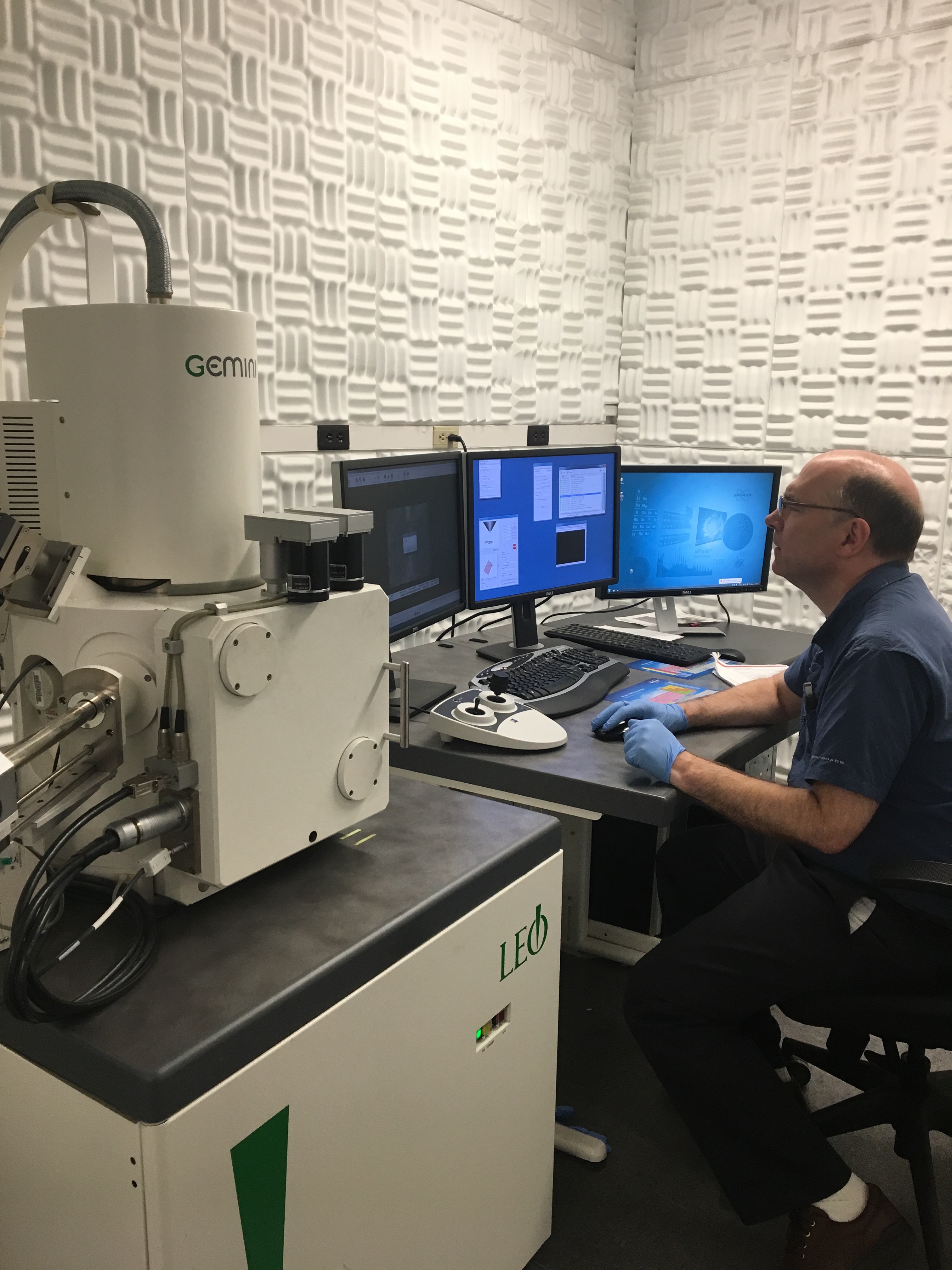Blog post by Samantha Stern ’17.
Fashions come in many forms, but few realize the potentially dangerous aspects of vintage and antique fashion. The term “mad hatter” is common vernacular, and comes from milliner’s occupational exposure to mercury (and, as a result, going “mad as a hatter”) in the late 19th century. Less well known are the effects of toxic dyes on laborers in textile mills, dressmakers, and eventually the consumers/wearers of these garments. In 1778, chemist Carl Scheele invented a colorfast green dye known as “Paris Green” or “Scheele’s Green” (David, 2015: 81). Colorfastness was achieved through copper arsenite, an unstable combination of copper and arsenic, which made it extremely toxic. By the 19th century people became aware that the dye was hazardous (particularly when used in wallpaper), yet it continued to grow in popularity for fashion items because of the vibrancy and colorfastness. Women began visiting doctors with red eyes and skin eruptions. Later testing of their evening gowns revealed lethal levels of arsenic (David, 2015: 96).
In 2015, I had the opportunity to visit the Bata Shoe Museum in Toronto to view an exhibit co-curated by Alison Matthews David and Elizabeth Semmelhack called Fashion Victims: The Pleasures and Perils of Dress in the 19th Century (which closes this coming Sunday, April 15, 2018). The exhibition highlighted the dangerous, and sometimes deadly, aspects of fashion in the 19th century. The use of arsenic dyes was one focus in the exhibit. Upon returning to Ithaca, it seemed fitting to research and write about a potential arsenic dress in the Cornell Costume and Textile Collection (CCTC): CCTC #82, which is a green plaid dress from 1865 with a full skirt, long sleeves, and a high collar as well as some black velvet ribbon detailing on the bodice. I hypothesized that this dress was dyed using “Scheele’s Green” or “Paris Green” based upon the date of the garment and the saturated hue of the textile—the garment showed little evidence of fading even though the silk used to construct the outer layer was beginning to shatter, likely a result of being weighted with metallic salts.
The gown (CCTC #82) was donated to the CCTC by the College of Human Ecology’s co-founder, Martha Van Rensselaer. The style and color of this green plaid dress represents a very popular Euro-American fashion from the 1860s: A floor-length plaid silk gown with fullness all around the body and a high-necked separate bodice with sloped shoulders. The design is trimmed with black velvet ribbon and jet beads, and the green plaid silk fabric is beginning to shatter. The skirt has box pleats, which create fullness all around the hip and legs. The skirt and bodice are separates, and the bodice is fully boned. The shape of the bodice sleeves creates an illusion of sloped shoulders by manipulating the armscye to droop lower on the shoulder.
In order to explore the potential arsenic content in the dress, I used a Scanning Electron Microscope to test the elements present in a sample of silk from the dress. We removed a small number of fibers from the inner seam allowance and then coated them in a thin layer of gold through a process called sputter coating. This process increases the signal and surface resolution of the fiber during SEM testing. We also left some fibers uncoated in case there were trace amounts of arsenic present on the fibers. During testing, the SEM machine did not detect any trace amounts of arsenic or copper, leading me to believe that CCTC #82 was not dyed with copper arsenate. While we did not get the chance to test other potential arsenic dresses like CCTC #2003.03.08, #2012.19.01ab, the results from CCTC #82 brings into perspective the variety of green dyes present in 1860s fashion.

A green plaid children’s dress from the mid-1800s. Also potentially an arsenic dress. CCTC #2003.03.08.
While modern garments (hopefully) do not contain toxic arsenic dyes, it is important to realize the perilous effects of modern fashion. Dyes used in the textile industry poison water sources, and in places like Tamil Nadu, India, are affecting human health and the livelihoods of local farmers through extreme water pollution. Textile dyeing facilities also pose health threats to factory laborers, who often work in sweatshop conditions for little money. We need to take a look at where our fashion comes from so that in 100 years, museums like the Bata Shoe Museum in Toronto do not have to create an exhibit about the perils of 21st century fashion.

Samantha Stern ’17 in 2015 with her contribution to the exhibition, “150 Years of Cornell Student Fashion.” Her case, “The Early Years: 1865 – 1913,” explored campus fashions through experiences of specific Cornell students.
Samantha Stern ’17 graduated with a Bachelor of Science degree in Fashion Design (with honors), and minored in anthropology. Throughout her four years at Cornell, she worked as an undergraduate research assistant in the Cornell Costume and Textile Collection. While working in the CCTC she curated the exhibition, “Heavy Metal: The Malleability of Fashion” (August – November 2015), and was a co-curator of the exhibitions, “150 Years of Cornell Student Fashion” (January – July 2015) and “Extremities” (December 2016 – February 2017). She currently works as a sweaters product development assistant at Tory Burch.
References:
Alison Matthews David (2015) Fashion Victims: The Dangers of Dress Past and Present. (London: Bloomsbury).






Wonderful dude wonderful! I have never read something which pleases you more than this article. I have come across some really good stuff about the topic in this article. I hope the writer will be generous enough to post more such stuff in the future. Thanks to the website for putting in some genuine good effort all the way.
https://www.dadsprinting.com/